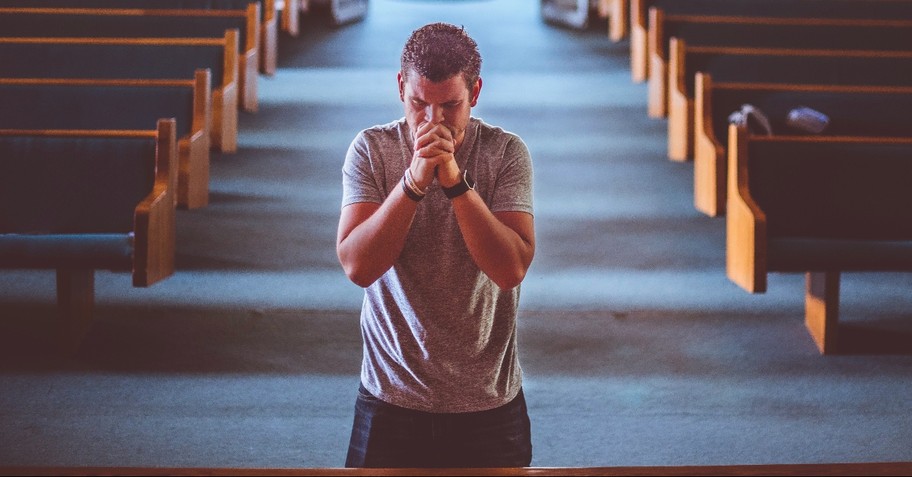Sometimes mistaken for Amish, Mennonites are a group of Christians that formed during the Protestant Reformation.
Their beginnings were marked by persecution, while the church itself has long been a proponent of peace. And while there are many divisions of Mennonites (also called Anabaptists), most agree on the core tenets of Christianity.
Here are 10 things you should know about Mennonites.
Photo courtesy: ©Thinkstock/MarcoPo

1. The Mennonite denomination is named after Menno Simons
Mennonites are members of a Protestant church that emerged from the Anabaptists, a radical reform movement of the 16th-century Reformation. The Mennonite Church was named after Menno Simons, a Dutch priest who consolidated and organized the work begun by moderate Anabaptist leaders.
Simons (1492-1561) became a Catholic priest at about 24, but he had doubts about some Catholic teachings. He started to “rely on Scripture alone for answers,” and eventually left the Catholic Church to become an Anabaptist, or “rebaptizer.”
He said he did not believe infant baptism was in the bible and studied the works of theologians Martin Luther and Heinrich Bullinger. After his brother, an Anabaptist, was killed in 1535, Simons left the Catholic Church. He became an influential man among Anabaptists in the Netherlands and northwestern Germany. Considered a heretic, Simons was constantly persecuted, and those who helped him were often executed. However, by 1544, the term “Mennonite” was used to describe Dutch Anabaptists. Mennonites became a new movement known for adult baptisms.
Photo courtesy: Wikimedia Commons/Public Domain

2. Mennonites faced persecution in the early years.
During the Protestant Reformation, when the “Protestant” group arose from disagreements in the Catholic Church, the Anabaptist and Mennonites battled persecution. Early Anabaptists in Switzerland had to move from European provinces to other areas because of persecution. Simon’s own brother was killed in an attack on the movement.
According to historians, many Anabaptists were imprisoned or executed. Helping Anabaptists was considered a crime and even those who sheltered Simons were punished. Those who recanted from the new religion and tried to return to the Catholic Church were often not pardoned. One Anabaptist history book says that many Anabaptists were “hunted down” and “killed on the spot without trial or sentence.”
Photo courtesy: iStock/Getty Images Plus/allanswart

3. Mennonites are actually not Amish.
While Mennonites and the Amish come from the same Anabaptist roots that began in the 16th Century, the Amish became a separate group from Mennonites. The groups agree on many beliefs (such as pacifism and adult baptism), but the Amish follow a stricter doctrine.
In 1693, Swiss Anabaptist leader Jacob Ammann did not believe that banning and shunning was being practiced well enough. He felt the current church was not strict enough and he separated to create the Amish.
Among the differences between the two, the Amish create their own communities isolated from the world, while Mennonites do not. Amish also hold to stricter rules: no electricity, horse and buggy transportation and plain dress. Most Mennonites, however, do not have such restrictions.
Photo courtesy: ©Thinkstock/Elysiumm

4. They are strong proponents of peace.
According to the Mennonite USA website, Mennonites hold a strong belief in peace, justice and nonresistance. The group believes that God’s peace is “most fully revealed in Jesus Christ” and they are responsible for following Christ “in the way of peace, doing justice, bringing reconciliation and practicing nonresistance even in the face of violence and warfare.”
Mennonites say violence is “not the will of God” and violence includes war, hostility among races and classes, child abuse, abuse of women, any violence between man and woman, abortion and capital punishment. Many Mennonites do not enlist and during World War II, those who served worked in Civilian Public Service rather than in the fighting forces. Even more, some do not even pay the portion of taxes that is earmarked for the military.
Photo courtesy: © Unsplash/Vivek Doshi

5. Many groups have split and created their own separate churches.
Like the split that formed the Amish, many other Mennonites have formed their own distinct group. One early split was in 1778 when Bishop Christian Funk supported the American Revolution. He was excommunicated and formed the Funkites. Later, the Orthodox Reformed Mennonite Church was formed, as was the Church of God in Christ, Mennonite, among others. Even recently, some Mennonite groups have split from the Mennonite Church USA, the U.S. group of Anabaptist Christians, because of differing views (more on this later).
Most Mennonite groups, however, fall under the Mennonite World Conference, a community of the majority of Anabaptist/Mennonite churches. Together, the Mennonite World Conference includes one international association and 102 Mennonite and Brethren in Christ churches in some 56 countries.
However, Mennonites are not governed by a hierarchical structure.
Photo courtesy: ©Getty Images/Baiterek Media

6. There’s some disagreement about homosexuality.
While the Mennonite Church USA officially views homosexuality as a sin and defines marriage between one man and one woman, many recent policies have seemed to support LGBT initiatives. The church has fired pastors and reprimanded officials for conducting LGBT weddings, but the Mennonite Church USA has also reportedly implemented some other LGBT support policies. In response, earlier this year, the Lancaster Mennonite Conference officially separated from the Mennonite Church USA over the national group’s changing views on homosexuality.
The Lancaster Mennonite Conference is the largest group of Mennonite congregations in the U.S. It includes about 179 congregations in New York, Ohio and Pennsylvania. A Pennsylvania pastor said of the decision, “We are in a sense not really leaving. They are the ones that essentially have left true biblical Christianity in this respect.”
Photo courtesy: Brielle French/Unsplash

7. Mennonites believe in salvation through Jesus, the Bible’s authority, the Holy Spirit and baptism.
Core to their beliefs are many that are in line with other Christian beliefs. According to Mennonite USA, the church “believe(s) that, through the life, death, and resurrection of Jesus Christ, God offers salvation from sin and a new way of life to all people.” On baptism, the church sees it as a sign of cleansing, a pledge before the church and a testimony to “God’s gift of the Holy Sprit.”
Mennonites also encourage the practice of foot washing. “Believers who wash each other’s feet show that they share in the body of Christ. They thus acknowledge their frequent need of cleansing, renew their willingness to let go of pride and worldly power, and offer their lives in humble service and sacrificial love.”
However, the group also believes that if “an erring member persists in sin without repentance and rejects even the admonition of the congregation,” he or she may be suspended or excommunicated. According to the church’s Confession of Faith in a Mennonite Perspective, the church will stay pray for that person to be restored to the church.
Photo courtesy: Unsplash/benwhitephotography

8. There is a Mennonite Name Game.
Although this isn’t a game that is actually played, many Mennonites understand that their names have meaning and upon being introduced to another Mennonite, Mennonites may “play the game” by finding out their new acquaintance is somehow related to him or her. In one case, a Mennonite said he met his second cousin for the first time while in college by “playing the name game.”
The relation typically stems from a long history of Mennonites marrying within the church and usually leads to a distant relation between long past ancestors.
According to the Mennonite Anabaptist Encyclopedia, Swiss Mennonite names include Eby, Snider, and Erb, among others, while Russian Mennonites include names such as Friesen, Dyck, and Neufeldt.
Photo courtesy: ©iStock/Getty Images Plus/92251238

9. Some groups have rules on clothing.
Because Mennonites are sometimes confused with Amish, many believe that Mennonites adhere to a strict dress code. In reality, what is worn depends on the specific Mennonite church.
Many modern Mennonite churches do not have any dress codes, even for women. However, there are some conservative sects of Mennonites that dress in a way to encourage modesty and separation from society. Women may wear dresses or head coverings.
Other rules on lifestyle also vary depending on the church. There are about 40 different Mennonite groups in the U.S. and those “vary in the way we dress, worship and relate to the world,” the Mennonite Church USA says. For the most part, however, according to the Mennonite Church USA, Mennonites welcome others to their churches. They also allow the use of technology and secular involvement in the world.
Photo courtesy: Getty Images/nickalbi

10. There are some 2.1 million Anabaptist/Mennonites in the world.
According to the Mennonite World Conference, there are about 2.1 million Mennonites in 87 countries in the world. Of the total, 32 percent of Mennonites are in North America. About 35 percent of the total in the world are in Africa, 20 percent are in Asia, nearly 10 percent is in the Caribbean and Latin America, and about 3 percent are in Europe.
The Mennonite World Conference counts nearly 6,000 congregations in the United States. The Mennonite Church USA, which doesn’t include all U.S. denominations of Mennonites, numbers have fallen about 17 percent, according to a 2016 report. Much of that loss is attributed to differing opinions and the loss of the Lancaster Mennonite Conference in its membership. However, worldwide the church is growing. In 2012, global membership was about 1.7 million. In 2015, that number was 2.1 million.
Photo courtesy: ©Thinkstockphotos.com Photo Credit: ©Unsplash/srz
This article is part of our Denomination Series, listing historical facts and theological information about different factions within and from the Christian religion. We provide these articles to help you understand the distinctions between denominations, including origin, leadership, doctrine, and beliefs. Explore the various characteristics of different denominations from our list below!
Catholic Church: History, Tradition & Beliefs
Jehovah's Witnesses & Their Beliefs
Mormons: The Church of Latter Day Saints & Their Beliefs
Baptist Church: History & Beliefs
Presbyterians: History & Beliefs
Mennonites & Their Beliefs
United Methodist Church: History & Beliefs
Seventh-Day Adventists & Their Beliefs
The Pentecostal Church: History & Beliefs
Lutheran History & Beliefs

Originally published April 20, 2018.







